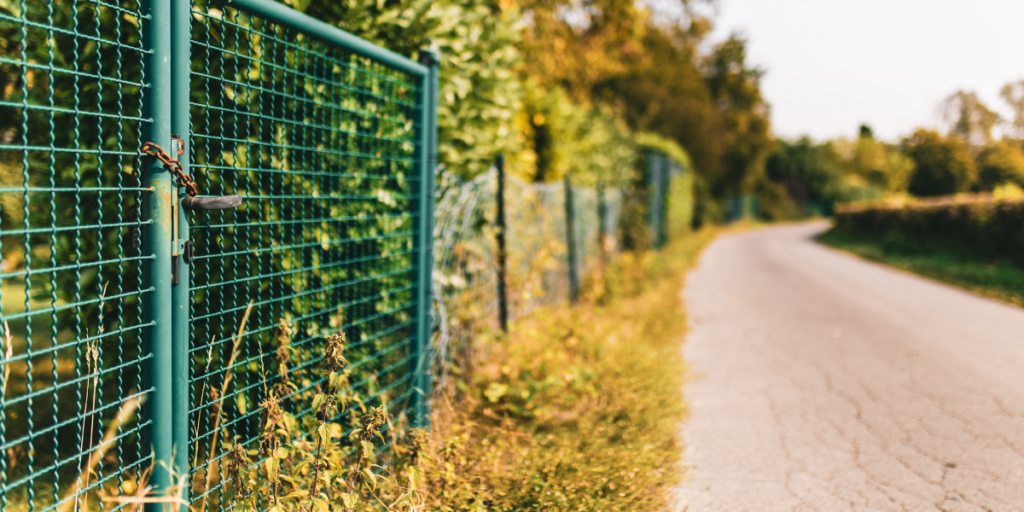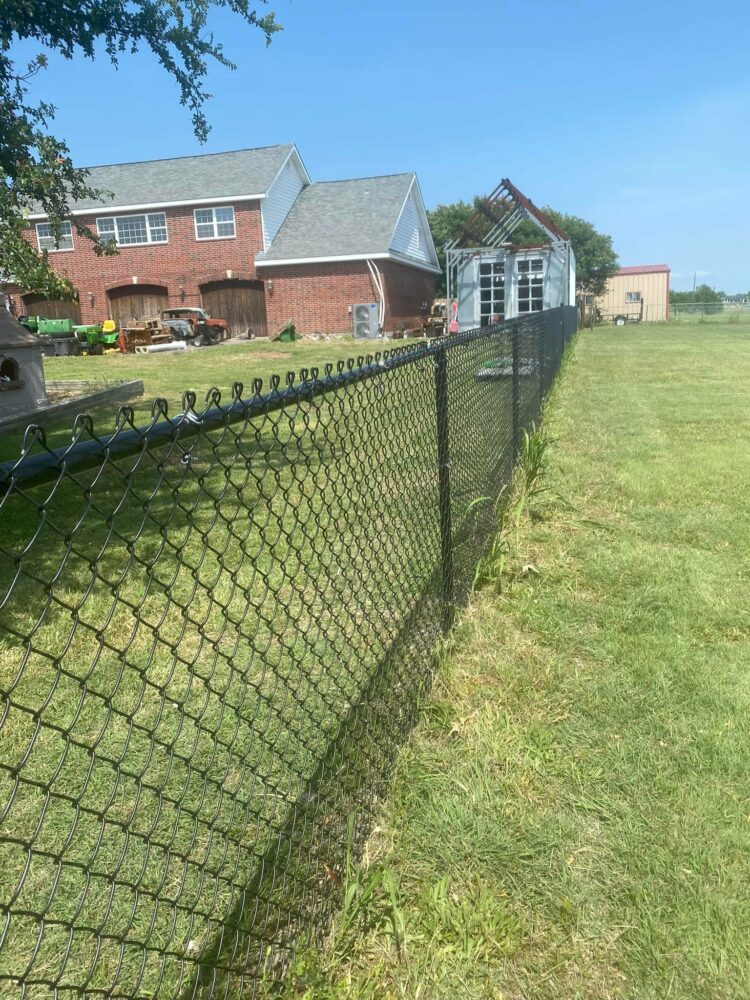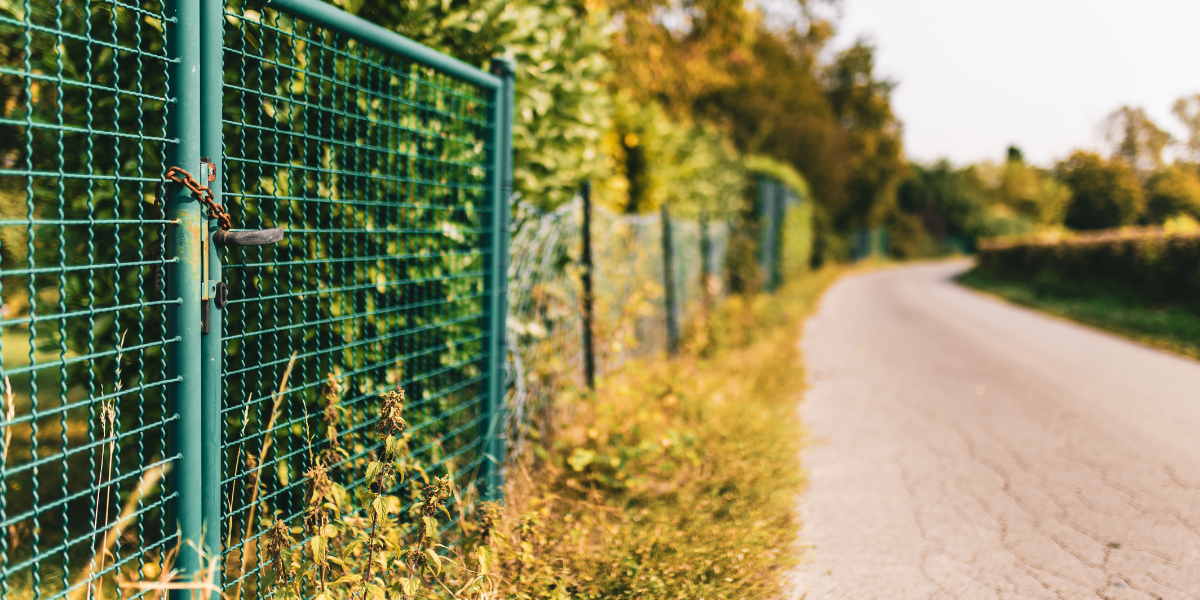Have you ever wondered how to keep your fence looking great and standing strong for years to come? Well, you’re in luck! In this article, we’ll dive into the topic of fence maintenance for durability and longevity. You’ll learn some valuable tips and tricks to keep your fence in top shape and protect your investment.
When it comes to fence maintenance, there are a lot of factors to consider. From choosing the right materials to regular cleaning and repairs, it’s important to take great care of your fence. We’ll discuss why regular maintenance is crucial and how it can save you time and money in the long run. Whether you have a wooden, metal, or vinyl fence, we’ll cover all the bases and provide you with expert advice. So, if you’re ready to learn more about keeping your fence looking its best, keep reading!
Fence Maintenance for Durability and Longevity
When it comes to enhancing the overall aesthetics and security of your property, a well-maintained fence plays a vital role. A sturdy and durable fence not only adds value to your home but also provides privacy and protection. However, to ensure that your fence remains in optimal condition for years to come, regular maintenance is essential. In this article, we will discuss the importance of fence maintenance and provide you with tips to maximize its lifespan.

Types of Fences
Before diving into the maintenance aspect, let’s first explore the different types of fences available. Understanding the varying materials and styles will help you choose the right one for your specific needs.
Wooden Fences
Wooden fences are a popular choice as they offer a classic and rustic appeal. They can be customized to suit various architectural styles and provide privacy. However, they do require regular maintenance to prevent rotting, warping, and termite damage.
Vinyl Fences
Vinyl fences have gained popularity in recent years due to their low maintenance requirements. They are resistant to rot, moisture, and insects, making them a durable and long-lasting option. Additionally, they come in various styles and colors, providing versatility in design.
Chain Link Fences
Chain link fences are known for their affordability and functionality. They are commonly used for both residential and commercial purposes. While they require minimal upkeep, occasional repairs and replacements may be necessary to maintain their integrity.
Metal Fences
Metal fences, such as wrought iron or aluminum, are known for their strength, durability, and ornamental appeal. Regular maintenance, including inspections for rust and corrosion, is crucial to ensure their longevity.
Factors to Consider Before Building a Fence
Before you embark on building a fence, it’s important to consider various factors that will impact its maintenance requirements. Taking these factors into account will help you make informed decisions and avoid potential issues down the line.
Budget
Determining your budget is the first step in selecting the right fence material and style. Different materials vary in cost, and it’s important to factor in both the initial investment and long-term maintenance expenses.
Purpose
Identify the purpose of your fence. Is it primarily for privacy, security, or aesthetics? Understanding your specific needs will guide you in choosing the appropriate height, style, and material.
Local Regulations
Before building a fence, familiarize yourself with local codes and regulations. Certain neighborhoods or homeowners associations may have specific guidelines regarding fence height, materials, and design. Ensure compliance to avoid any legal consequences or disputes.
Material Durability
Research the durability and maintenance requirements of the fence materials you are considering. Some materials, such as vinyl, require less maintenance, while others, like wood, may need regular staining, sealing, or painting.

Planning and Designing Your Fence
Careful planning and designing are crucial to ensure your fence serves its purpose effectively and enhances the aesthetics of your property. Consider the following aspects during the planning phase:
Choosing the Right Location
Identify the boundaries of your property and choose the right location for your fence. Clear any obstructions and consult utility companies to avoid any underground utility lines.
Determining the Fence Height
Consider the purpose of your fence, whether it’s for privacy, security, or decoration, and determine the appropriate height accordingly. Keep local regulations in mind while making this decision.
Selecting the Right Style
Choose a fence style that aligns with the architecture of your home and complements the overall aesthetics. Whether you prefer a traditional picket fence or a modern aluminum design, there are numerous options to choose from.
Adding Gates and Entryways
Consider the placement of gates and entryways in your fence design. Ensure they are easily accessible and functional while maintaining security and privacy.
Materials for Building a Fence
The choice of materials for your fence significantly influences its maintenance requirements and lifespan. Let’s explore some common materials used for building fences:
Wood
Wood is a classic and versatile material for fences. However, it requires regular maintenance to prevent rot, decay, and insect infestation. Periodic staining, sealing, and repairs are necessary to maintain its durability.
Vinyl
Vinyl fences are an excellent low-maintenance alternative to wood. They do not require painting, staining, or sealing. Occasional cleaning with soap and water is usually sufficient to keep them in good condition.
Metal
Metal fences, especially wrought iron and aluminum, are known for their strength and durability. Regular inspections, especially for rust and corrosion, are essential. Applying protective coatings can help prolong their lifespan.
Composite
Composite fences are a combination of wood fibers and recycled plastic. They offer the appearance of wood with the low maintenance of vinyl. While more expensive than wood or vinyl, they are resistant to rot, pests, and fading.

Preparing the Ground
Properly preparing the ground before installing your fence will contribute to its stability and longevity. Follow these steps to ensure a solid foundation:
Clearing Vegetation
Remove any vegetation, shrubs, or trees along the fence line. This will prevent interference with the fence structure and maintenance in the future.
Leveling the Ground
Ensure the ground is level along the fence line. Uneven terrain can compromise the stability of the fence, leading to sagging or leaning. Use a level and a measuring tape to ensure accuracy.
Adding a Concrete Base
Consider adding a concrete base for added stability, especially for posts. Pouring concrete around the fence posts can help prevent shifting and ensure a solid foundation.
Marking the Fence Line
Accurately mark the fence line to maintain a straight and symmetrical appearance. Use stakes, a string, and a measuring tape to achieve precise measurements and alignment.
Step-by-Step Fence Installation Process
With careful planning and preparation, you are now ready to install your fence. Follow these steps for a successful installation:
Digging Post Holes
Use a post hole digger or an auger to dig holes for the fence posts. Ensure that the holes are deep and wide enough to support the height and weight of your fence.
Installing Fence Posts
Place the fence posts securely in the holes. Use concrete to provide additional stability if necessary. Allow the concrete to dry completely before proceeding to the next step.
Attaching Fence Panels
Attach the fence panels to the posts using appropriate hardware and fasteners. Ensure proper alignment and spacing between the panels for a uniform and aesthetically pleasing result.
Adding Finishing Touches
Add finishing touches, such as post caps or decorative elements, to enhance the overall appearance of your fence. These details not only add a personal touch but also provide protection against water damage.

Maintaining and Repairing Your Fence
Regular maintenance and timely repairs are essential to ensure the longevity and durability of your fence. Neglecting maintenance can lead to costly damage and decrease the lifespan of your fence. Consider the following maintenance tasks:
Regular Cleaning and Inspection
Regularly clean your fence to remove dirt, debris, and mold. Inspect for any signs of damage or wear, such as loose boards, rust, or discoloration. Address any issues promptly to prevent further damage.
Repairing Loose Boards
Replace or repair any loose or damaged boards promptly. This will help maintain the structural integrity of your fence and prevent further damage.
Replacing Damaged Panels
If any fence panels are severely damaged or beyond repair, consider replacing them. This will ensure that your fence remains secure and visually appealing.
Treating Wood for Longevity
If you have a wooden fence, periodic treatments such as staining, sealing, or painting are necessary to protect it from the elements. These treatments help prevent rot, decay, and insect infestation.
Protecting Your Fence from Weather Elements
Weather elements can significantly impact the longevity of your fence. Take the necessary measures to protect your fence from these elements:
Applying Weatherproof Sealant
For wooden fences, applying a weatherproof sealant is crucial to prevent water damage, rot, and warping. Ensure that the sealant is recommended for the specific type of wood used in your fence.
Protecting Against Mold and Mildew
Regularly inspect your fence for any signs of mold or mildew. Clean affected areas using a mixture of water and mild detergent. Consider applying a mold and mildew-resistant paint or coating to prevent future growth.
Preventing Rust and Corrosion
For metal fences, preventing rust and corrosion is essential. Apply a protective coating or paint specifically designed for metal to prevent damage caused by moisture or salt.
Securing Fence Against Strong Winds
If you live in an area prone to strong winds, reinforce your fence to prevent damage. Use stronger posts, reinforced hardware, or install windbreaks to protect your fence from excessive wind force.

Ensuring Privacy and Security with Your Fence
Fences not only provide privacy but also serve as a security measure for your property. Consider the following aspects to enhance privacy and security:
Adding Privacy Screening
Consider adding privacy screening, such as lattice panels or vegetation, to increase privacy along your fence line. These options help obscure the view while adding aesthetic appeal.
Choosing Security Features
If security is a priority, choose fences with security features, such as spiked or spear-topped pickets. These features act as deterrents and enhance the security of your property.
Installing Fence Locks
For added security, consider installing fence locks on gates and entryways. This will prevent unauthorized access and provide peace of mind.
Enhancing Security with Landscaping
Strategic landscaping can enhance the security of your property. Consider planting thorny bushes or installing motion-activated lights along your fence line to deter intruders.
Decorative Options for Your Fence
Your fence can be more than just a functional structure; it can also be a statement piece for your property. Consider the following decorative options:
Painting and Staining
Add a splash of color to your fence by painting or staining it. Choose colors that complement the surrounding landscape and your home’s exterior.
Adding Lattice or Trellis
Incorporate lattice or trellis panels into your fence design to create an elegant and decorative touch. These additions provide opportunities for climbing plants and add visual interest.
Incorporating Lighting
Install lighting fixtures along your fence line to create a warm and inviting ambiance. Consider solar-powered options for an eco-friendly and cost-effective solution.
Hanging Decorative Accents
Hang decorative accents, such as wind chimes, outdoor art, or potted plants, on your fence to add personal style and charm. These small details can make a big difference in the overall look and feel.
Dealing with Common Fence Problems
Despite proper maintenance, fences may encounter common issues over time. Knowing how to address these problems will help you prolong the lifespan of your fence:
Sagging and Leaning
If your fence is sagging or leaning, it may be a result of weak or rotting posts. Secure the posts by reinforcing them with additional concrete or replacing them if necessary.
Rotting or Termite Damage
Wooden fences are susceptible to rotting and termite damage. Address these issues promptly by replacing or repairing affected areas. Consider treating the wood with protective coatings or chemicals.
Fence Post Shifting
Over time, fence posts may shift or become loose. Realign and secure them in the ground using additional concrete or hardware to prevent further shifting.
Fence Discoloration
Discoloration of fences can occur due to exposure to the elements. Clean the fence thoroughly using appropriate cleaning solutions and consider repainting or staining to restore its original appearance.
Removing and Disposing of Old Fences
If your fence has reached the end of its lifespan or you wish to replace it with a new one, proper removal and disposal are essential. Follow these steps for a smooth transition:
Taking Apart the Fence
Carefully disassemble the fence, starting from the top, and work your way down. Remove nails, screws, and hardware from the fence panels for reuse or proper disposal.
Proper Waste Disposal
Dispose of fence materials responsibly according to local regulations. Some materials, such as wood, may be suitable for recycling or repurposing. Consider renting a dumpster or hiring a waste removal company for large quantities.
Recycling Options
Certain fence materials, such as aluminum or steel, can be recycled. Check with local recycling centers or scrap metal yards to determine the proper recycling method for your specific fence materials.
Hiring Professional Removal
If the removal process seems overwhelming or if you lack the necessary tools or expertise, consider hiring a professional fence removal service. They will ensure a safe and efficient removal and disposal process.
Maximizing the Lifespan of Your Fence
Maximizing the lifespan of your fence requires attention and proactive measures. Implement the following tips to ensure your fence stands the test of time:
Regular Maintenance Schedule
Create a regular maintenance schedule for your fence. Incorporate tasks such as cleaning, inspections, and repairs to prevent problems from escalating and ensure timely intervention.
Proper Cleaning Techniques
Follow appropriate cleaning techniques based on the material of your fence. Use mild detergents, soft bristle brushes, and gentle rinsing to avoid damage. Avoid abrasive cleaners or tools that may scratch or dull the surface.
Using Quality Materials
Invest in quality materials from reputable suppliers. High-quality materials not only ensure durability but also reduce the frequency of repairs and replacements.
Hiring Professional Inspections
Consider hiring professional fence inspections, especially for complex or extensive fence systems. They can identify issues that may not be immediately visible and provide expert advice on maintenance and repairs.
Conclusion
Maintaining your fence for durability and longevity is a responsibility that should not be overlooked. By following a regular maintenance routine and taking proactive measures, you can prolong the lifespan of your fence and ensure its optimal performance. From choosing the right materials to incorporating decorative options, each aspect contributes to the overall durability and aesthetics of your fence. Remember, a well-maintained fence not only adds value to your property but also enhances your privacy and security. By investing time and effort into maintaining your fence, you can enjoy its benefits for years to come.
Importance of Fence Maintenance
Regular maintenance is crucial for maintaining the durability and longevity of your fence. Neglecting maintenance can lead to costly repairs, premature wear and tear, and a decrease in property value. By taking the time to clean, inspect, and address any issues promptly, you can avoid major problems and extend the lifespan of your fence.
Tips for Long-lasting Fences
To maximize the lifespan of your fence, follow these tips:
- Regularly clean your fence to remove dirt, debris, and mold.
- Inspect your fence for any signs of damage or wear, such as loose boards or rust.
- Address any issues promptly by repairing or replacing damaged components.
- Treat wooden fences with stain, sealant, or paint to protect them from rot and decay.
- Apply weatherproof sealant or coatings to protect your fence from the elements.
- Reinforce your fence against strong winds to prevent damage.
- Enhance privacy and security with additional features such as privacy screening or security locks.
- Incorporate decorative options to add visual appeal and personalize your fence.
- Deal with common fence problems, such as sagging or discoloration, promptly to prevent further damage.
- Properly remove and dispose of old fences to clear the way for a new one.
Enhancing Property Value with Well-maintained Fences
A well-maintained fence can significantly enhance the value of your property. Potential homebuyers and visitors often form their first impression based on the appearance of the fence. A durable and aesthetically pleasing fence not only adds curb appeal but also highlights the overall care and attention you have given to your property. By investing in regular maintenance and addressing issues promptly, you can increase the marketability and value of your home.
Visit Fencedude.org for more articles and information on fence maintenance and other fence-related topics. Our website covers all aspects of fences, providing reliable information and answering your questions about maintenance, installation, materials, and more.
